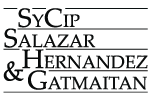The Banking Regulation Review 4th Edition – Philippines
Chapter 43
Philippines
Rafael A Morales1
I INTRODUCTION
Banks in the Philippines are classified into (1) universal banks, (2) commercial banks, (3) thrift banks, (4) rural banks, (5) cooperative banks, (6) Islamic banks, (7) government-owned banks, and (8) other banks as may be classified by the Bangko Sentral ng Pilipinas (‘BSP’).2 Universal and commercial banks are the dominant group, representing approximately 70 per cent of the resources of the banking system.3 Under the General Banking Law of 2000 (‘GBL’), a universal bank is defined as a commercial bank with the additional authority to exercise the powers of an investment house and invest in non-allied enterprises.4 An ordinary commercial bank does not have that authority.
There are branches, as well as subsidiaries or affiliates, of foreign banks in the Philippines that are licensed either as universal or commercial banks. Others have offshore banking units with more limited functions.5


 Post a comment
Post a comment Print article
Print article

